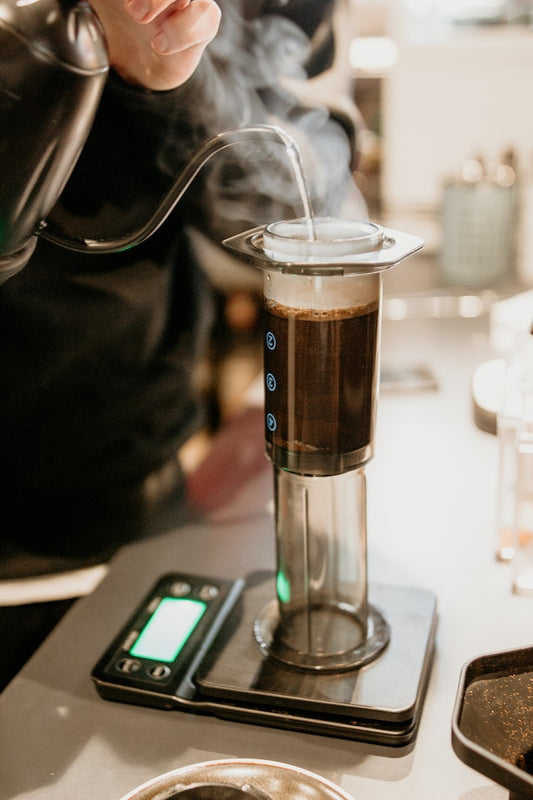When it comes to your morning cup of coffee, the choices can seem endless. The key to crafting the perfect brew lies in understanding the types of coffee beans and how to select the right ones for your preferred coffee experience. In this article, we'll delve into the world of coffee beans, their origins, and how to make the best choice for your daily caffeine fix.
Understanding Coffee Beans
Coffee beans are the seeds of the Coffea genus of flowering plants, which belong to the Rubiaceae family. These beans are the heart of your favorite beverage, and they come from the fruits of the coffee plant, often referred to as cherries. These cherries yield two seeds, or "beans," which are harvested and processed to become the coffee we know and love.
The journey from cherry to cup involves several crucial steps. After harvesting, the immature green coffee beans are soaked for two days to remove an outer layer of sticky pulp. Then, they are roasted to varying degrees, resulting in light, medium, or dark roast options. The degree of roast significantly influences the flavor profile of the coffee.
Coffee beans can be ground to various consistencies depending on the brewing method. From fine powders for concentrated espresso-based drinks to coarse, pebbly grinds for pour-overs, drip coffee, and French press carafes, the grind size plays a vital role in extracting the desired flavors.
The Origins of Coffee
The history of coffee is as rich and diverse as the flavors it offers. Legend has it that an Ethiopian goat herder first discovered the Coffea plant around 850 AD. However, coffee cultivation on a larger scale did not begin until the seventeenth century. Over time, coffee spread from Yemen and the Arabian Peninsula to regions in East Africa, India, and eventually found its way to Europe. By the eighteenth century, it had journeyed to South America and the Caribbean, making its mark on global culture.
Where Coffee Plants Thrive
Coffee plants thrive in over 50 countries around the world, primarily within the "Bean Belt." This region encompasses tropical and sub-Saharan areas of Africa, including Ethiopia and Liberia, Southeast Asia, which includes the Philippines, Indonesia, and Vietnam, and South America, with major coffee-producing nations like Brazil and Colombia.
Exploring Coffee Varieties
The Coffea genus boasts over a hundred different species, with three main categories of coffee beans taking center stage:
1. Arabica (Coffea arabica): Arabica beans are the most widely produced coffee beans globally. They were first discovered in Ethiopia and thrive at high altitudes, above sea level. Known for their smooth flavor and lack of bitterness, single-origin coffees often feature 100 percent Arabica beans. Popular Arabica varietals include Typica, Bourbon, and Caturra, with Brazil leading the world in Arabica production.
2. Liberica (Coffea liberica): Liberica coffee beans, discovered in Liberia, are known for their high caffeine content and potent flavors. Varieties such as Excelsa grow in Southeast Asia and offer a wide range of flavor profiles, from bold and bitter to exotic and complex.
3. Robusta (Coffea canephora): Robusta coffee is native to sub-Saharan Africa. These beans are commonly used in blends due to their dominantly bitter flavors, which may be less desirable on their own. Robusta beans are often chosen for making instant coffee.
Choosing the Perfect Coffee:
Whether you're a casual coffee drinker or a connoisseur, making the right choice when it comes to coffee is essential. Here are some key considerations for selecting the ideal beans:
- Single-Origin vs. Blends: Single-origin coffees highlight the unique qualities of a specific region or farm, offering a pure expression of a coffee bean's flavor. In contrast, coffee blends combine different beans to achieve a balanced flavor profile.
- Selecting for Flavor: The roast level of coffee beans significantly impacts their flavor. A light roast preserves the original flavor profile of the bean, resulting in bright and floral notes. A medium roast offers lower acidity with hints of warm caramel, while dark roasts provide a rich, smoky, and bitter flavor.
- Caffeine Content: Contrary to popular belief, dark roasted beans may contain less caffeine than lightly roasted ones. The roasting process affects the density of the beans, impacting caffeine content when measured scoop for scoop.
In conclusion, the world of coffee beans is vast and fascinating. By understanding the different types of coffee beans and their origins, as well as considering your flavor preferences and caffeine requirements, you can make an informed choice when selecting the perfect beans for your morning brew. So, whether you're a coffee enthusiast or just seeking that daily pick-me-up, your journey through the diverse world of coffee beans is sure to be a flavorful one.




